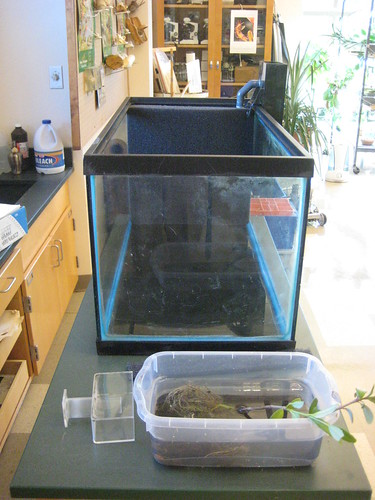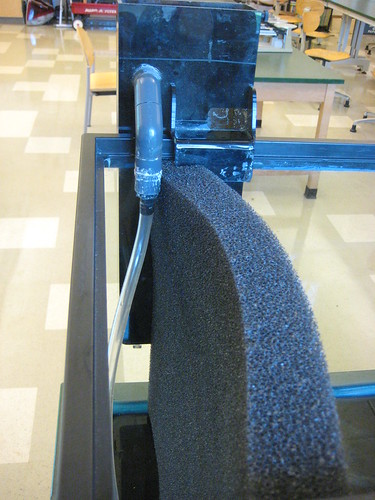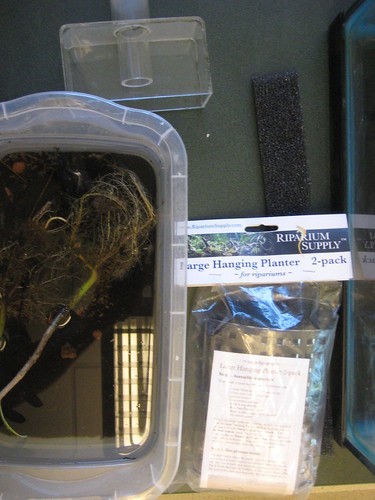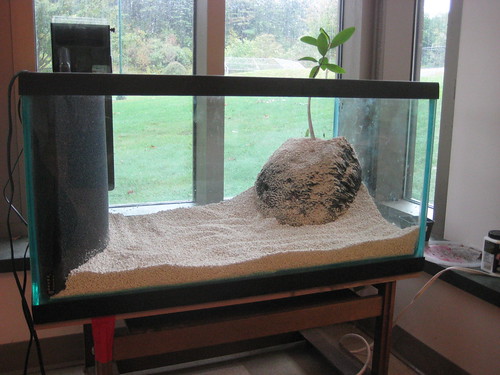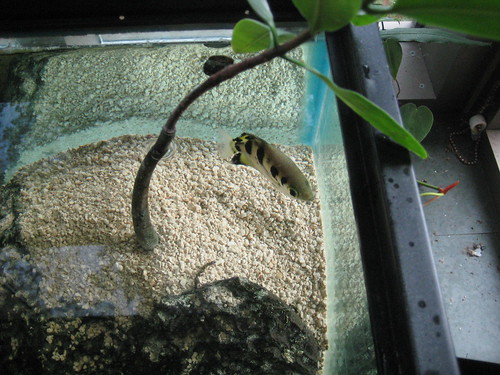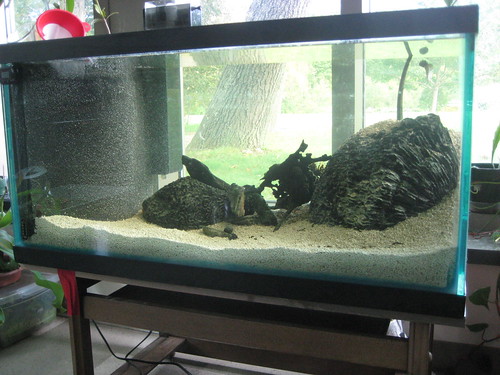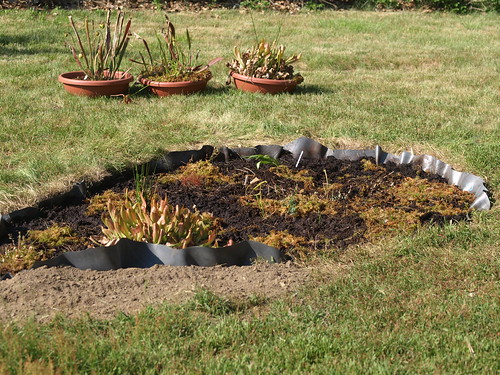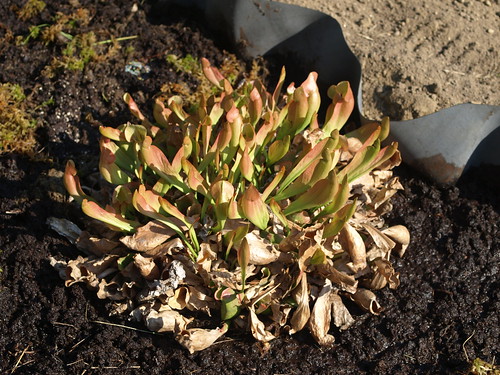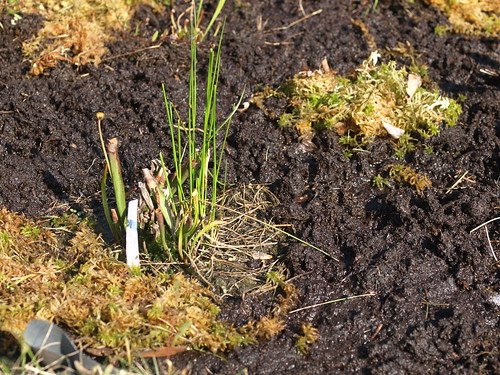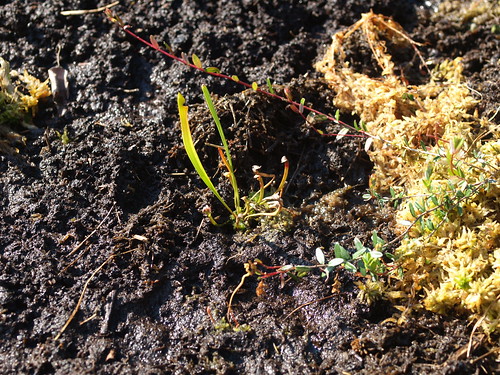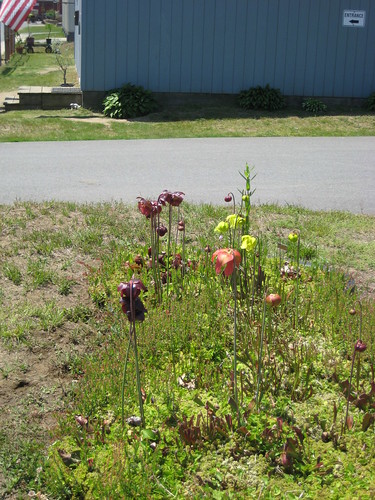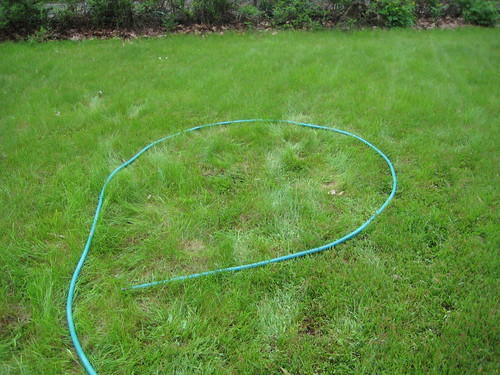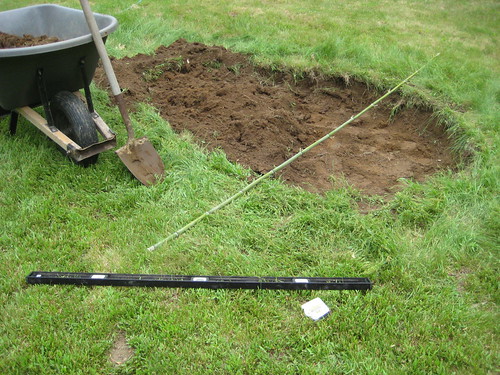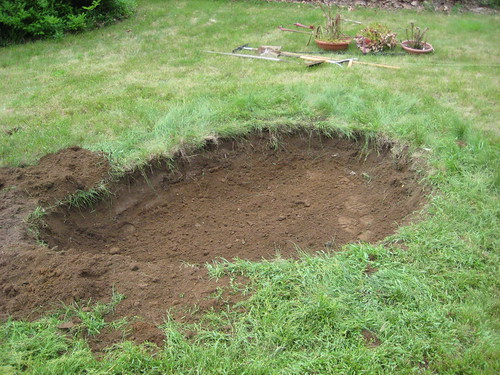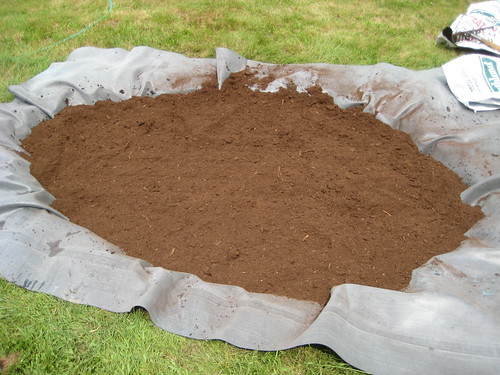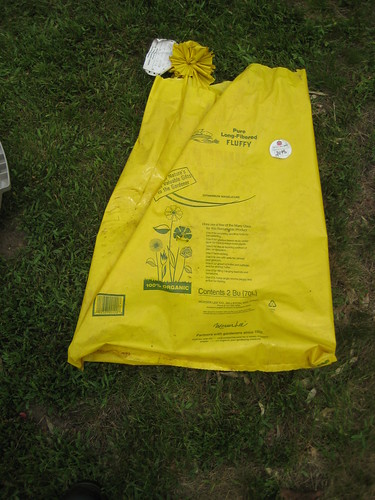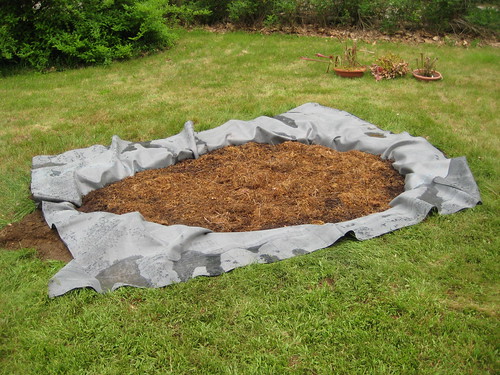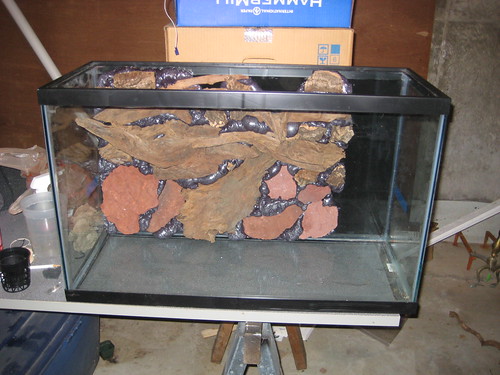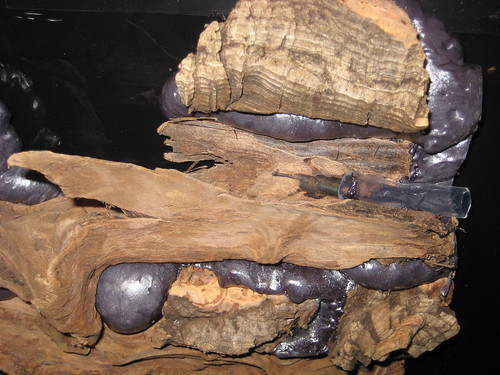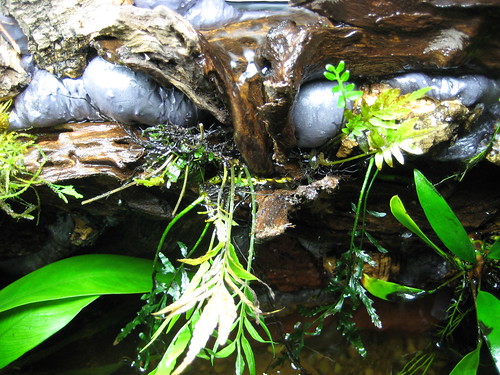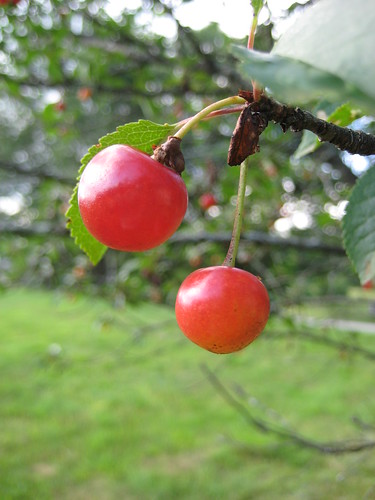Wow. The brackish mangrove tank has been up and running for 3 years! In that time I’ve figured a few things out.
- Mangrove seedlings really do not like to be planted in deep ( > 4″) water.
- If you are going to keep the tank temperature close to 80F/26C in a climate controlled building a chiller is not necessary, even if the tank is in a window. The only time the chiller ran was when I fiddled with the controller to test it.
- In spite of all its good points (weight, etc.) I am still not a fan of acrylic for tank construction.
Over the summer I took it into my head to re-do the mangrove tank. I wanted to move it and swap out the (starting to scare me w/ cracks) acrylic tank for a glass one a friend had given me (thanks, Scott). The original tank was 48x18x18, with an 18″ cube at one end housing the filter (6″) and chiller (12″). The new one is 36x18x18 – exactly the same water volume – and as we did the move we’d be able to rotate it 90 degrees so the 36×18 side would face into the room.
Getting things ready. Two black mangroves, the tank, filter foam and a foam fractionator (aka protein skimmer).
*
Test fitting the filter foam. I set up a modified Mattenfilter using Poret foam. I can’t recommend this rig highly enough. I have 2 freshwater aquaria set up this way (powerhead just recircs back into the tank – no skimmer) and -knock wood- they both work beautifully.
*
The roots of 2 black mangroves and the planters both will go into. Mangroves and planters courtesy of Riparium Supply – thanks, Hydrophyte!
*
Old tank drained and moved, new tank in place. The mechanicals – pump, heater, skimmer – are ready, the red mangrove is planted in some muck scooped from the old tank and the substrate is in place. I saved about 25 gallons of water from the old tank – in it goes, along with enough new water to get us where we want to be.
*
Voila!
*
*
*
*
I’ll update as things settle in, meanwhile, there are more pictures here.

